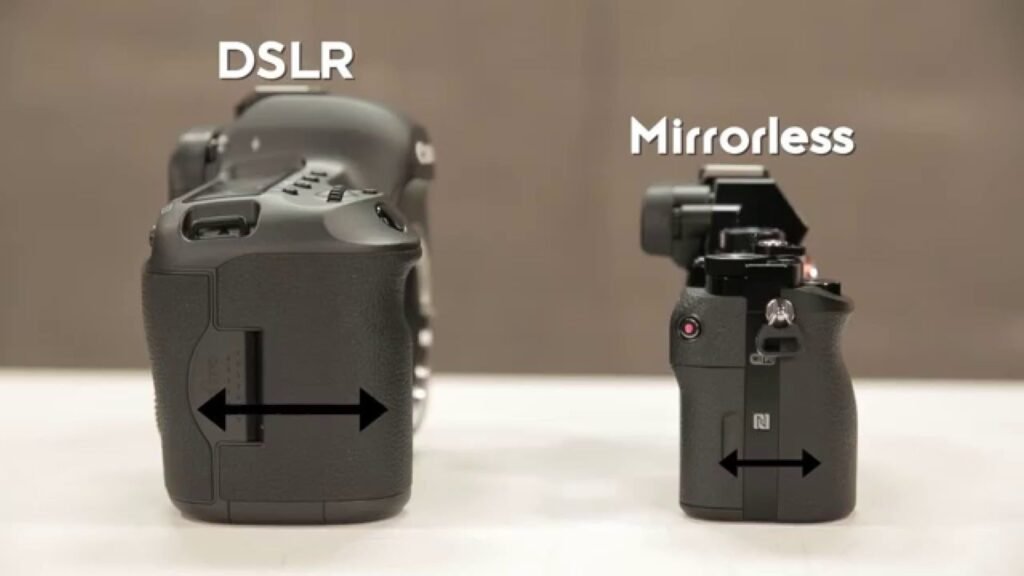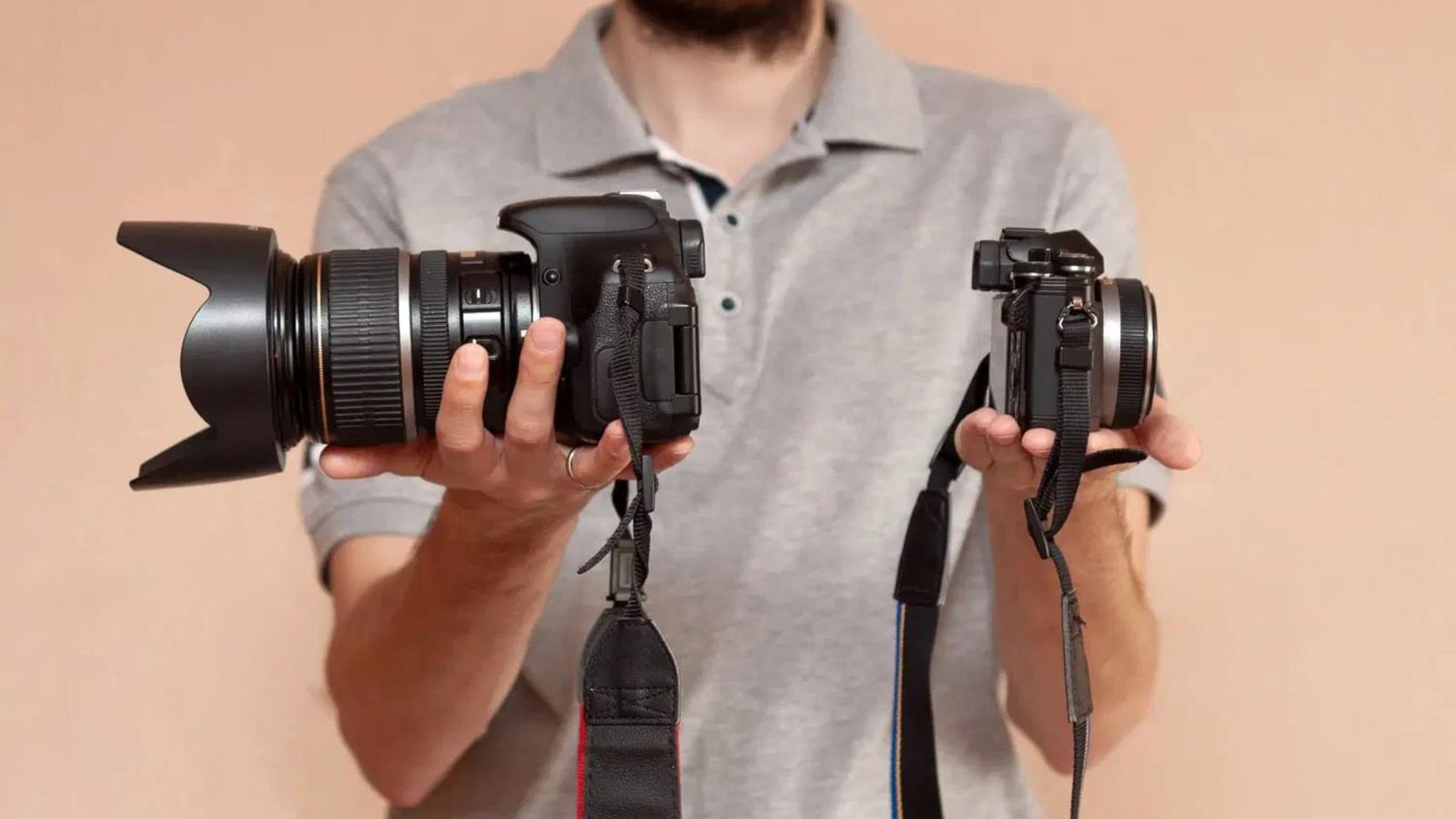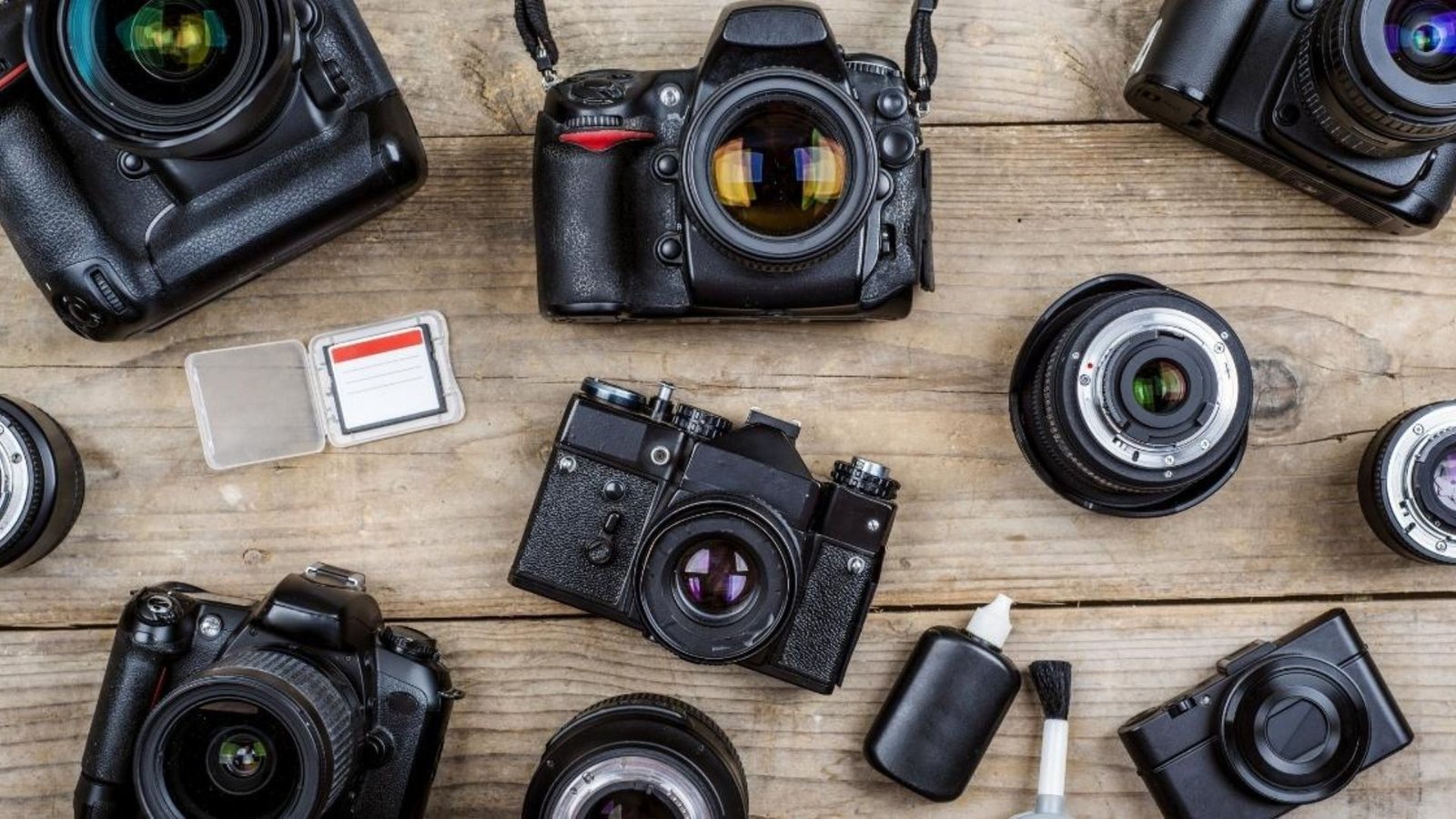When choosing a camera, the decision between a mirrorless and a DSLR (Digital Single-Lens Reflex) can be daunting. Both types of cameras offer distinct advantages, and your choice will depend on your specific needs and preferences. Here’s a detailed guide to help you decide which camera type is right for you.

Mirrorless vs. DSLR Cameras: Key Differences
1. Size and Weight
- Mirrorless Cameras: Generally smaller and lighter due to the absence of a mirror mechanism. This makes them more portable and convenient for travel and everyday use.
- DSLR Cameras: Larger and heavier because they include a mirror box and optical viewfinder. This can make them less portable but may provide a more substantial feel and grip.
2. Viewfinder
- Mirrorless Cameras: Use an electronic viewfinder (EVF) or rely on the camera’s screen to compose shots. The EVF displays a digital preview of the image, which can be useful for seeing real-time exposure adjustments.
- DSLR Cameras: Feature an optical viewfinder that shows a direct view through the lens. This provides a clear, lag-free image but lacks the digital preview that EVFs offer.
3. Autofocus Speed
- Mirrorless Cameras: Typically excel in autofocus speed and accuracy, especially for video and live view shooting. Many mirrorless cameras use on-sensor phase-detection, which can be faster in certain conditions.
- DSLR Cameras: Historically had superior autofocus systems for still photography due to dedicated phase-detection sensors. However, recent advancements in mirrorless technology have narrowed this gap.
4. Battery Life
- Mirrorless Cameras: Often have shorter battery life due to the constant use of electronic viewfinders and screens. Carrying extra batteries is recommended for extended shoots.
- DSLR Cameras: Generally offer longer battery life because they rely on an optical viewfinder rather than an electronic one. This can be advantageous for long shoots or travel.
5. Lens and Accessory Availability
- Mirrorless Cameras: Newer systems may have fewer lens and accessory options compared to DSLRs. However, this is rapidly changing as manufacturers release more compatible lenses and accessories.
- DSLR Cameras: Have a broader selection of lenses and accessories due to their longer presence in the market. This makes it easier to find specialized gear.
6. Image Quality
- Mirrorless and DSLR Cameras: Both can deliver high image quality, with many models offering comparable resolution, dynamic range, and color accuracy. Your choice may come down to other features and personal preference rather than image quality alone.
7. Video Capabilities
- Mirrorless Cameras: Often have advanced video features, including higher resolutions and frame rates. They are favored by videographers for their versatility and electronic viewfinders.
- DSLR Cameras: Have made significant strides in video capabilities, but may not offer the same level of advanced features and ease of use for video compared to mirrorless models.
Choosing the Right Camera for Your Needs
1. Determine Your Priorities
- Portability: If you need a lightweight and compact camera for travel, a mirrorless camera might be the better choice.
- Battery Life: For extended shooting sessions without frequent recharging, a DSLR could be more suitable.
2. Consider Your Shooting Style
- Action Photography: Mirrorless cameras with fast autofocus systems can be ideal for capturing fast-moving subjects.
- Traditional Photography: DSLRs provide a reliable and well-established platform for still photography.
3. Budget and Future Growth
- Budget: Mirrorless cameras can be more expensive upfront, but consider the cost of lenses and accessories as well. DSLRs may offer more affordable options with a wide range of lenses.
- Future Growth: Think about the system’s potential for future upgrades and compatibility with additional lenses and accessories.
Conclusion
Choosing between a mirrorless and DSLR camera depends on your specific needs, preferences, and budget. Mirrorless cameras offer compactness, advanced technology, and excellent video capabilities, while DSLRs provide durability, longer battery life, and a wider selection of lenses and accessories. Assess your priorities and shooting style to make an informed decision that will best suit your photography needs.










